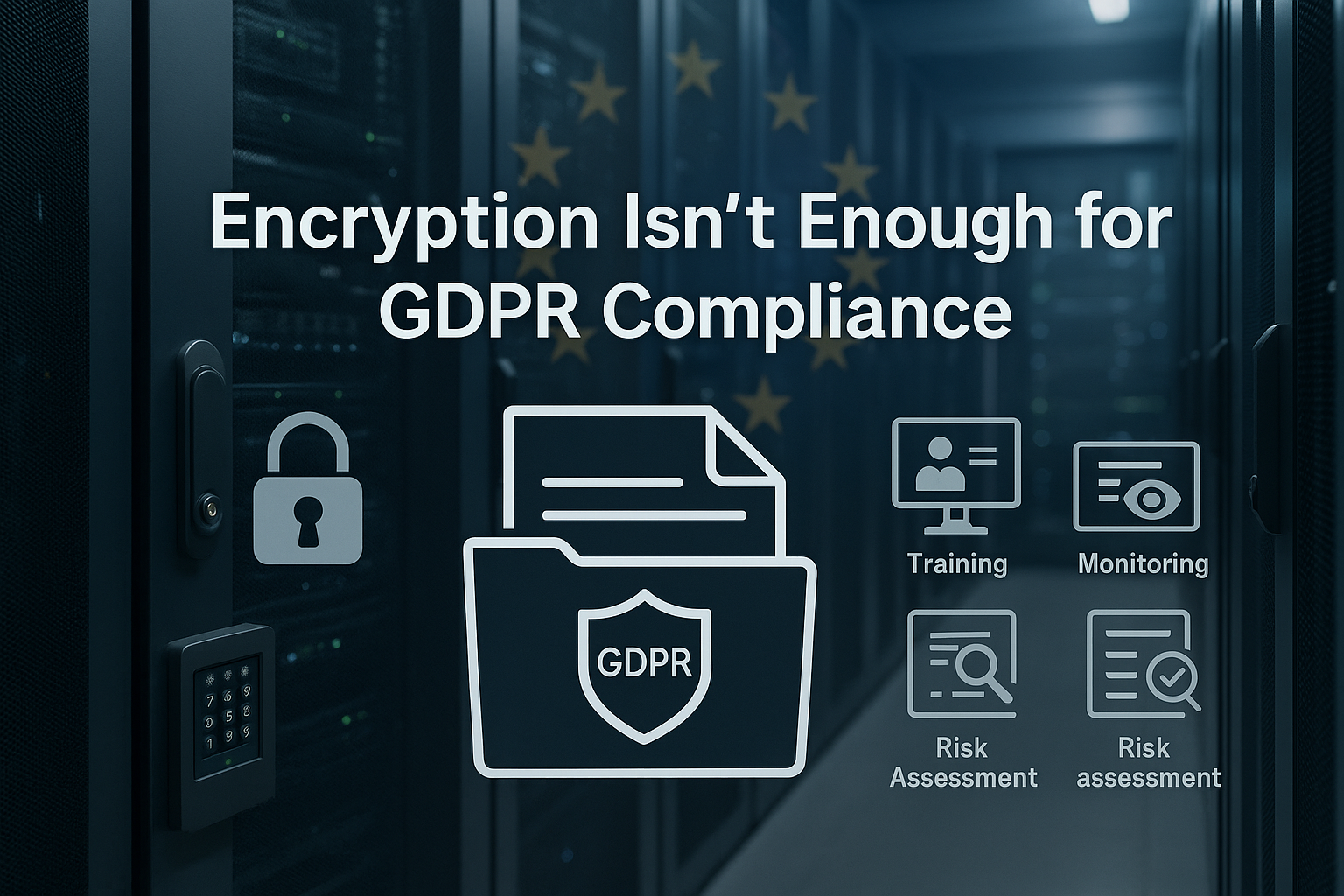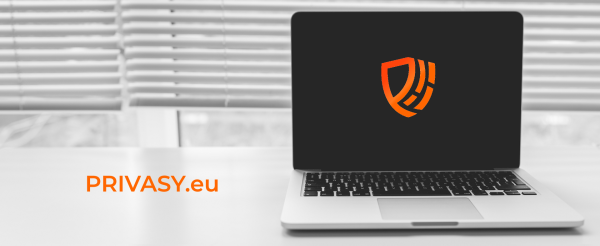Encryption Isn’t Enough for GDPR Compliance
A common misconception about GDPR compliance is that encrypting personal data is sufficient to meet the regulation’s requirements. While encryption is a valuable safeguard mentioned in the GDPR, it is not a mandatory requirement in all cases, nor does it alone ensure compliance.
The GDPR adopts a holistic approach to data security, requiring that organizations implement technical and organizational measures appropriate to the level of risk involved. Simply encrypting data without addressing broader risks, governance, and documentation fails to meet this standard.
For CIPP/E candidates, understanding this distinction is critical. Exam scenarios frequently challenge candidates to assess whether security measures truly align with the risk-based approach laid out in Articles 5, 25, and 32.
Introduction to Data Security in the GDPR Framework
The belief that encryption alone satisfies GDPR obligations overlooks the regulation’s foundational principle: accountability. Under Article 5(2), organizations must be able to demonstrate that they are protecting personal data appropriately.
This is why the GDPR mandates the use of technical and organizational measures (TOMs) that are tailored to the nature, scope, and risks of the processing activity. The notion of a one-size-fits-all safeguard like encryption contradicts this flexible, risk-based model.
The CIPP/E Body of Knowledge emphasizes this concept, particularly when assessing breach notification obligations, security strategies, and controller responsibilities under Article 32.
The Role of Encryption in the GDPR
Encryption is a method of converting data into an unreadable format unless a decryption key is used. It protects data from unauthorized access, especially when it is transmitted or stored externally.
The GDPR references encryption as an example of an “appropriate” safeguard in Article 32(1)(a). However, this is not a blanket requirement. As GDPRhub explains, encryption is one of several possible measures, and its use should be justified by a specific risk assessment.
Controllers must assess whether encryption is suitable for the processing activity, how it is implemented, and whether it complements other necessary controls. Encryption by itself, without proper key management or internal safeguards, does not fulfill the GDPR’s broader expectations.
Situations Where Encryption Helps Reduce Risk
Encryption can play a powerful role in reducing the likelihood and impact of data breaches. For example, encrypting a company laptop protects personal data if the device is lost or stolen. Similarly, encrypting data in transit—such as over email or during cloud synchronization—helps prevent unauthorized interception.
In some cases, encryption can even relieve a controller from breach notification duties. Under Article 34, if personal data is encrypted in such a way that it becomes unintelligible to unauthorized users, there may be no need to notify the affected data subjects.
As noted by Endpoint Protector, encryption may lower the severity of a breach—but only if implemented with up-to-date standards and secure key management practices.
GDPR’s Broader Security Requirements
While encryption mitigates certain risks, GDPR compliance requires much more. Under Article 32, controllers and processors must implement “appropriate technical and organizational measures” (TOMs) based on a variety of contextual factors:
- The nature, scope, context, and purpose of processing
- The likelihood and severity of risks to data subjects’ rights
- The state of the art and implementation costs
These criteria reinforce that encryption alone doesn’t cover risks like internal misuse, unauthorized employee access, or the lack of data minimization practices. A file may be encrypted, but if it’s stored for longer than needed or accessible to all staff, it still violates GDPR principles.
As Robin Data emphasizes, TOMs must be designed holistically and reviewed regularly—not selected at random or used in isolation.
Examples of Other Required Measures
Beyond encryption, GDPR expects organizations to take additional actions to secure personal data and demonstrate accountability. These include:
- Strong access controls and user authentication procedures
- Staff training and awareness programs
- Routine backups and tested recovery plans
- Regular audits and penetration testing
- Data minimization strategies
- Vetting and oversight of processors and vendors
As Captain Compliance explains, encryption should be one layer in a defense-in-depth strategy—not the only one. Organizations must address both human and technical vulnerabilities through a structured, proactive approach.
Encryption and the Accountability Principle
Article 5(2) of the GDPR introduces the accountability principle, which requires that controllers not only comply with the regulation—but also prove it. This is where encryption often falls short when used in isolation.
Encrypting data without documenting the rationale, training staff, or assessing related risks does not meet this burden. Organizations are expected to conduct Data Protection Impact Assessments (DPIAs) when processing is high-risk, and to integrate encryption into data protection by design and by default under Article 25.
As Cryptomathic notes, organizations must also address key management, version control, and compliance with emerging encryption standards—none of which are covered by simply toggling on encryption software.
Common Pitfalls
Overreliance on encryption can lead to a dangerous false sense of security. Controllers may assume data is protected without verifying the strength or configuration of the encryption method. Improper implementation—such as using outdated algorithms or failing to rotate keys—undermines its effectiveness.
Equally concerning is the failure to protect data once it’s decrypted. If access controls are weak or staff are unaware of secure handling protocols, encrypted data quickly becomes exposed.
Encryption is not a replacement for staff training, internal audits, or breach response procedures. Compliance requires a full understanding of how personal data is processed, where vulnerabilities lie, and how risks are mitigated—not simply deploying a tool and hoping for the best.
CIPP/E Exam Relevance and Practical Application
CIPP/E exam scenarios frequently focus on technical and organizational measures (TOMs) and the nuances of security of processing under Article 32. Candidates may be asked whether a given safeguard—like encryption—alone meets GDPR standards. The correct answer often involves recognizing the need for additional controls and risk assessments.
From a real-world standpoint, controllers must recognize that encryption is just one part of an evolving privacy management program. Documentation, periodic reviews, and integration with other privacy-enhancing technologies are essential to remain compliant and reduce exposure.
The CIPP/E Body of Knowledge stresses that risk-based thinking must be embedded into every decision—not only for security, but for accountability and transparency as well.
Encryption Is a Start—Not the Whole Solution
Encryption is a powerful tool for protecting personal data, and one that the GDPR explicitly recognizes. However, it is not enough on its own to satisfy the regulation’s requirements.
True GDPR compliance demands a tailored, risk-based approach that includes a variety of technical and organizational measures. Controllers must consider the full lifecycle of data, integrate security into their design processes, and prove compliance through ongoing governance.
CIPP/E candidates and privacy professionals alike should study Articles 25 and 32—and review encryption within the larger framework of data protection strategy—to prepare for both exams and operational reality.



